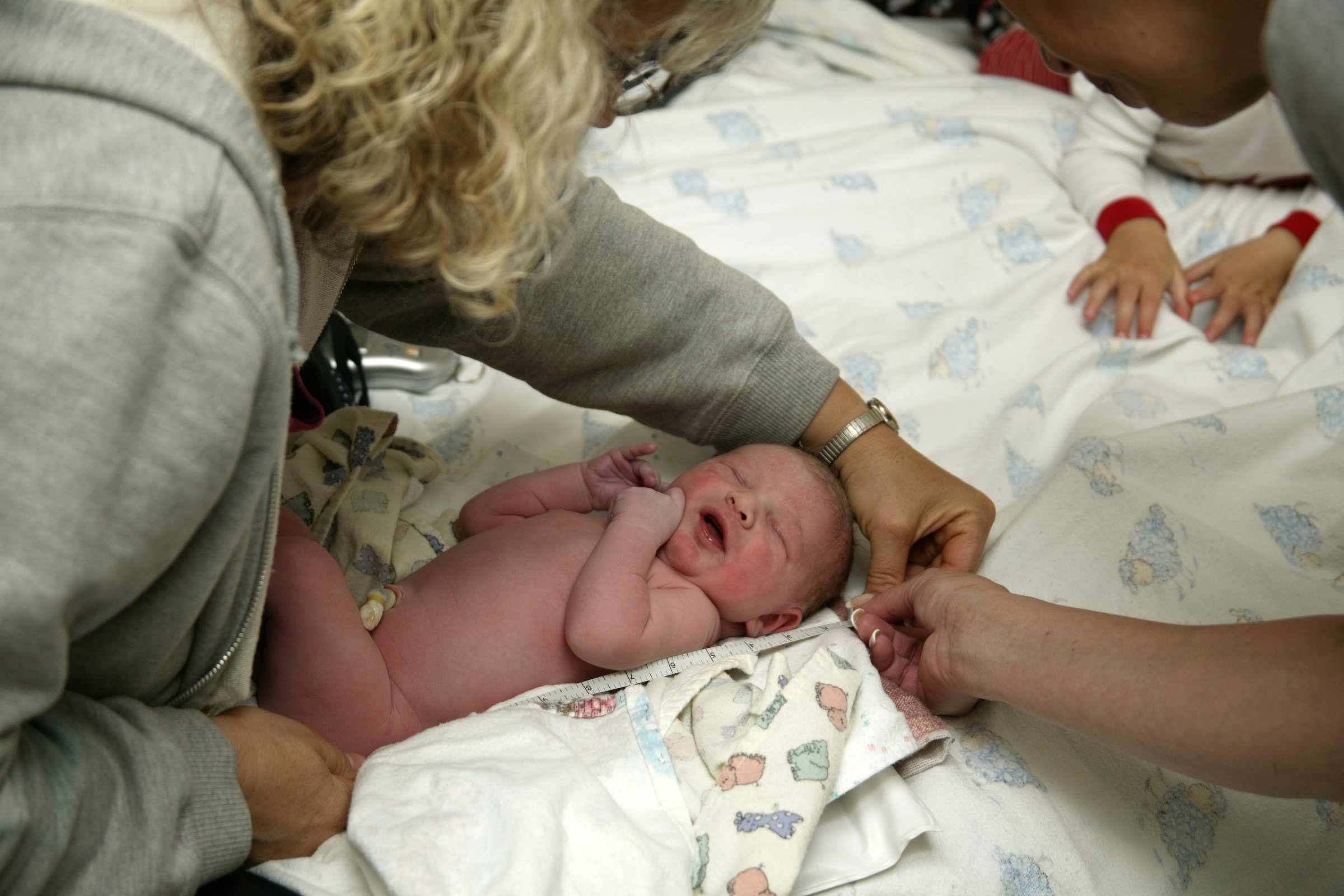
Updated: Feb. 5, 10:55 a.m.
Major pediatric and gynecological groups recommend hospital births as the safest option for women, but it’s not necessarily because the birthing skills of midwives fall short of doctors’ abilities. It’s the home part that’s problematic.
A new study from researchers at New York-Presbyterian/Weill Cornell Medical Center presented at the Society for Maternal-Fetal Medicine’s annual meeting, The Pregnancy Meeting, in New Orleans, found a growing rate of newborn deaths associated with home births.
That’s disturbing because the practice is becoming more popular in the U.S. In 2012, the CDC reported that after declining from 1990 to 2004, the rate of home births has increased by almost 30% from 2004 to 2009 (the latest years for which numbers are available).
(MORE: Why Home Births Are On The Rise)
Using CDC data collected from 14 million infant births and deaths, the research team learned that the rate of newborn deaths was greater for home births delivered by midwives (12.6/10,000 births) compared to births delivered by midwives in a hospital (3.2/10,000 births). The death rates were even greater for first-time mothers having a midwife delivery at home (21.9/10,000 births). Births in a hospital–even if delivered by a midwife, were still safer than home deliveries.
Taken together, there were about 18 to 19 additional newborn deaths from midwife home deliveries compared to midwife hospital deliveries. If home births by midwives continue to increase at the current rate, the researchers suspect that newborn mortality could almost double from 2009 to 2016.
Based on these findings, the scientists say that expectant parents should be aware of the risks of home births, and doctors should strongly encourage women who want to use midwives to deliver at a hospital. Many families choose home births because they believe that having their baby at home is more comfortable for both mom and baby; to accommodate them, hospitals could make their birthing experiences more welcoming and relaxing for mothers.
In 2013, the American Academy of Pediatrics released guidelines on home deliveries in which its experts agreed with the American College of Obstetricians and Gynecologists (ACOG) that the safest delivery occurs at a hospital or a birthing center. However, because home births are increasingly popular, the Academy included a long list of recommended safety measures, such as making sure parents used a midwife who is certified by the American Midwifery Certification Board (AMCB).
In a response sent to TIME, the American College of Nurse-Midwives (ACNM) raises skepticism over determining the accuracy of the data that the study was based on. “Birth certificates are not always completely filled out, nor are they always filled out by the provider attending the birth. They are not always accurate, when compared to medical charts filled out by the attending provider,” they write. “The birth certificate data do not allow researchers to accurately separate out planned versus unplanned home births. We know that mortality rates are higher for unplanned home births, as they are more likely to involve emergency/urgent situations. The inability to separate these out casts doubt on the findings.”
ACNM also stands by it stance that women have a right to make informed decisions about their choice of birth setting. “ACNM believes it’s important to focus on a seamless, integrated process for transfer of care so that women who have chosen, and will continue to choose, a home birth setting for childbirth, have access to the appropriate level of safe, respectful care,” they write.
This article has been updated to include comments from the American College of Nurse-Midwives.
More Must-Reads from TIME
- Cybersecurity Experts Are Sounding the Alarm on DOGE
- Meet the 2025 Women of the Year
- The Harsh Truth About Disability Inclusion
- Why Do More Young Adults Have Cancer?
- Colman Domingo Leads With Radical Love
- How to Get Better at Doing Things Alone
- Michelle Zauner Stares Down the Darkness
Contact us at letters@time.com